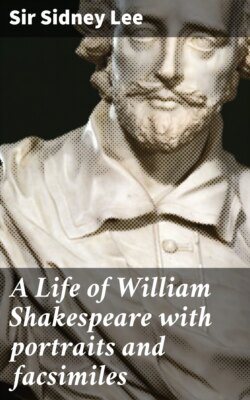Читать книгу A Life of William Shakespeare with portraits and facsimiles - Sir Sidney Lee - Страница 27
На сайте Литреса книга снята с продажи.
III—THE FAREWELL TO STRATFORD
ОглавлениеTable of Contents
Anne Hathaway’s greater burden of years and the likelihood that the poet was forced into marrying her by her friends were not circumstances of happy augury. Although it is dangerous to read into Shakespeare’s dramatic utterances allusions to his personal experience, the emphasis with which he insists that a woman should take in marriage ‘an elder than herself,’ [25a] and that prenuptial intimacy is productive of ‘barren hate, sour-eyed disdain, and discord,’ suggest a personal interpretation. [25b] To both these unpromising features was added, in the poet’s case, the absence of a means of livelihood, and his course of life in the years that immediately followed implies that he bore his domestic ties with impatience. Early in 1585 twins were born to him, a son (Hamnet) and a daughter (Judith); both were baptised on February 2. All the evidence points to the conclusion, which the fact that he had no more children confirms, that in the later months of the year (1585) he left Stratford, and that, although he was never wholly estranged from his family, he saw little of wife or children for eleven years. Between the winter of 1585 and the autumn of 1596—an interval which synchronises with his first literary triumphs—there is only one shadowy mention of his name in Stratford records. In April 1587 there died Edmund Lambert, who held Asbies under the mortgage of 1578, and a few months later Shakespeare’s name, as owner of a contingent interest, was joined to that of his father and mother in a formal assent given to an abortive proposal to confer on Edmund’s son and heir, John Lambert, an absolute title to the estate on condition of his cancelling the mortgage and paying £20. But the deed does not indicate that Shakespeare personally assisted at the transaction. [26]
